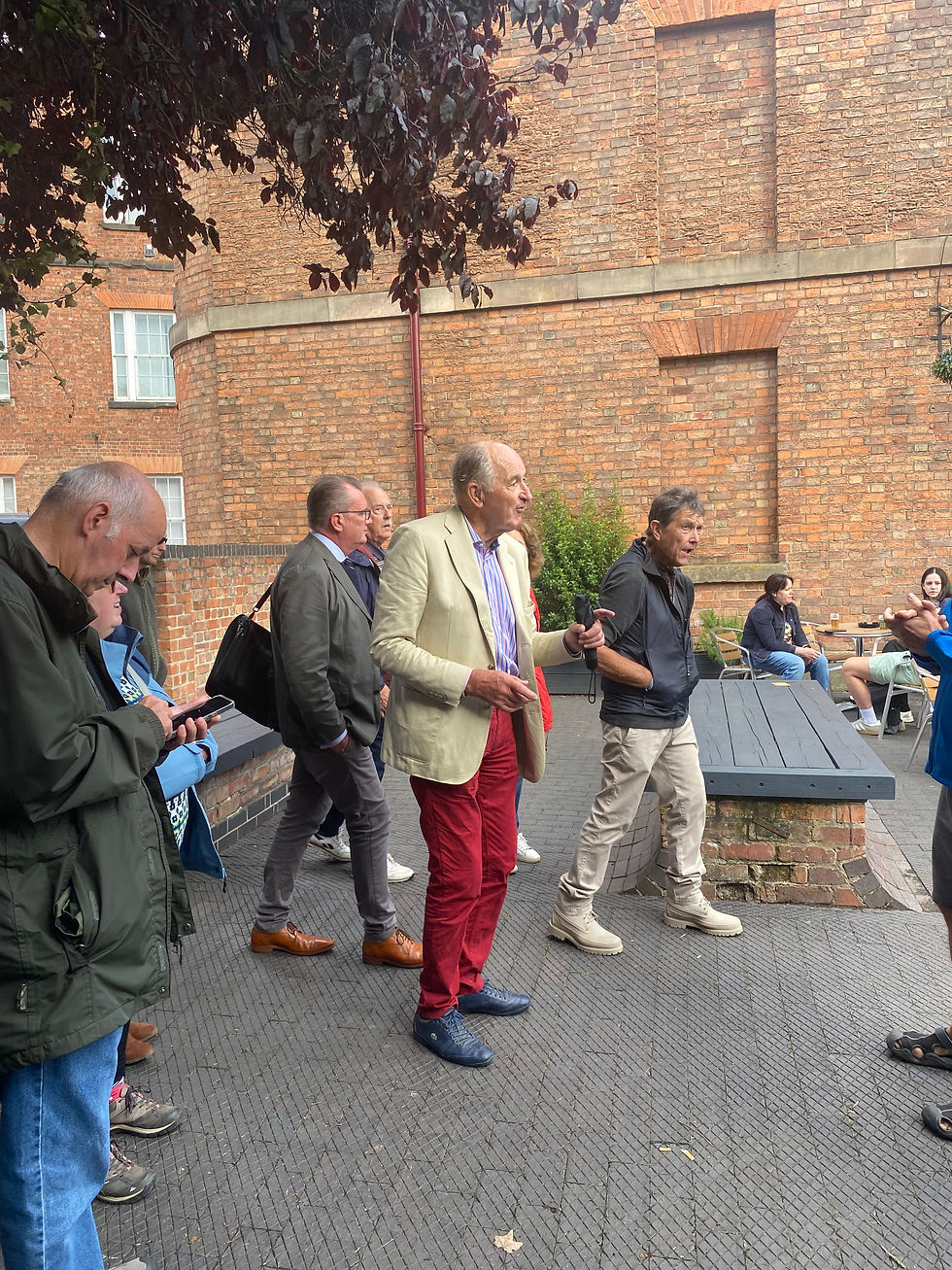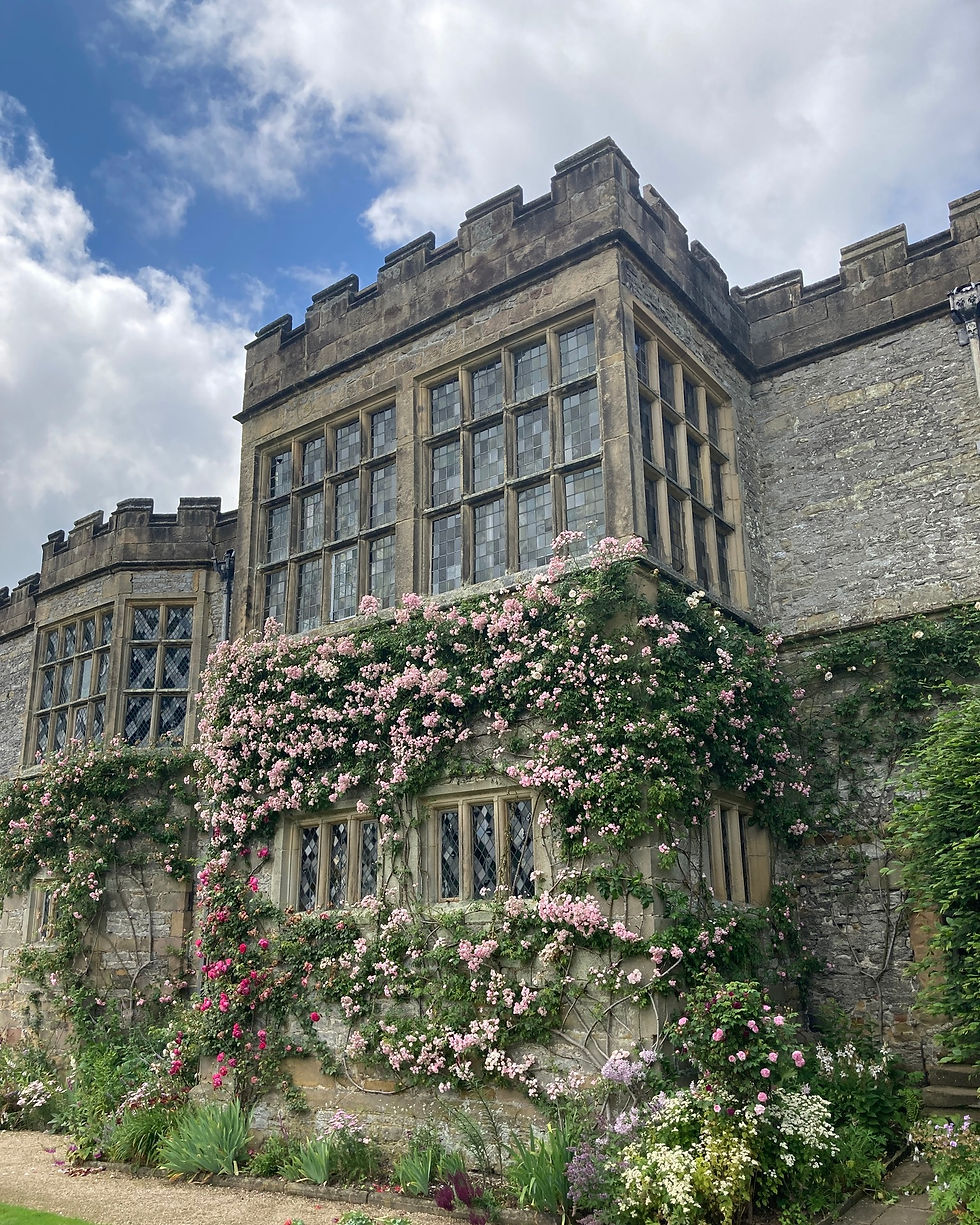Derbyshire Historic Buildings Trust B@R Crawl: My Experience as a University of Derby Intern
- Admin

- Sep 26
- 4 min read

In this article, I’ll be providing an insight into how our first Derbyshire Historic Buildings Trust (DHBT) B@R Crawl came together and what the experience was like on the day.
As a third-year history student at the University of Derby, I’m fascinated by the ways in which people connect with places. During my internship at DHBT I’ve been fortunate to explore (and experience) first-hand how the buildings around us shape our relationship with the past - and how we find meaning in these places today.
The city of Derby is full of iconic and important architectural spaces that are best discovered socially; in a lively atmosphere where discussion is encouraged, with local experts on hand to answer questions. I was tasked with creating an event that would facilitate such an atmosphere, incorporating some of Derby’s best known and oldest pubs.
I started by planning the route. The main challenge was to incorporate Derby’s most iconic historic pubs, as well as to fit in a visit to the Brunswick which is further away from the town centre.
We wanted to include this Francis Thompson designed pub, as it was carefully restored by Derbyshire Historic Buildings Trust, in the nineteen-eighties.
Next, came the research. I consulted Maxwell Craven’s Illustrated history of the Pubs of Derby and visited the local studies library in Derby City Centre. Here, I made use of some valuation documents, that are available for viewing.
DHBT volunteer Julian Tubbs first informed me of their existence and even brought some copies along with him to share with the group. Julian’s wider contributions to my research were extremely helpful. These volumes were compiled in the 1930s, and to my knowledge, include the valuation and layout of every pub in Derby.
It was interesting to learn how the layouts of these buildings have evolved over the years, and find out about historic pubs that are, unfortunately, no longer with us. These included the Nottingham Castle pub, dating from the early sixteenth century, which stood in the cathedral quarter (on the corner of St Michael’s Lane and Queen Street) until the early 1960s when it was demolished. At this point, I was unable to find out why.
To add to my perspective, I asked local historian and owner of Derby Gaol, Richard Felix, for his guidance. We conducted a practice walk together, which was useful, both for gauging timings and adding some authenticity to the proceedings.
During our walk (which began with him locking me in a cell at Derby Gaol) he shared with me some invaluable information that was central to the final tour. Richard played a vital part in the tour’s success, sharing his knowledge, and his passion for the heritage of Derby.
Onto the tour itself. The turnout was brilliant, and it was rewarding to see so many people engaging with the city and rediscovering it in a new light. We started with a walk to Vernon Gate prison, where DHBT trustee Peter Milner gave an engaging talk about the history of the site.
We ended with a talk by Derek Latham, DHBT Chairman, who gave a behind the scenes look into the 1980s restoration of the historic pub. The highlight for me was sharing a pint with fellow members of the DHBT team in the Brunswick. I also got to find out why the Nottingham Castle was demolished, thanks to Derek. Interactions like this make each of our events unique. And it’s great to be there when historic buildings facilitate real conversations.
From our starting point at the Greyhound, to our final stop at the Brunswick it was difficult not to appreciate the fact that we live in such a historically significant city. Notable stops included the Bess of Hardwick, one of the best-preserved eighteenth-century townhouses in the country, and the Old Bell, a central location on the vast coaching network, vital to the industrial development of Derby. All of which I was able to capture in a set of photographs that I took along the route.
This experience has been a key part of my internship experience so far. Both this walk, as well as the success of the wider ‘Buildings at Risk’ (B@R) project, has shown me how much the people of Derbyshire care about our historic buildings and safeguarding their future.
The B@R Crawl was a celebration of what the wider ‘Buildings at Risk’ project has been able to achieve so far. The project involves our team of volunteers, armed with the B@R mobile app created by our colleagues at the West Midlands Historic Buildings Trust with support from Historic England, completing basic condition surveys of Grade II listed buildings and monuments across Derbyshire.
Thanks to our amazing volunteers, we have already surveyed over 90% of the Grade II listed structures in Amber Valley and Derby city in just a few months. Recently, we also launched the project in South Derbyshire, home to such historic towns as Melbourne and Repton, and many of our volunteers have already been busy surveying buildings throughout the area. It was fantastic to see some of our ‘Super Surveyors’ at the B@R Crawl so that we could thank them in person for their continued vital support.
If you are interested in volunteering with us as part of the B@R project, or would just like to find out more about the initiative, please visit our volunteer hub:
or email the team:
It is with thanks to The National Lottery Heritage Fund and National Lottery players that this project has been made possible.










